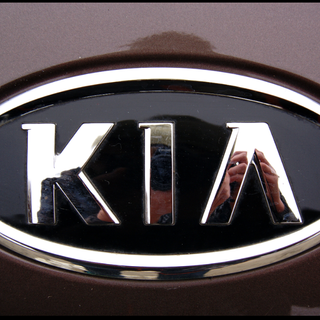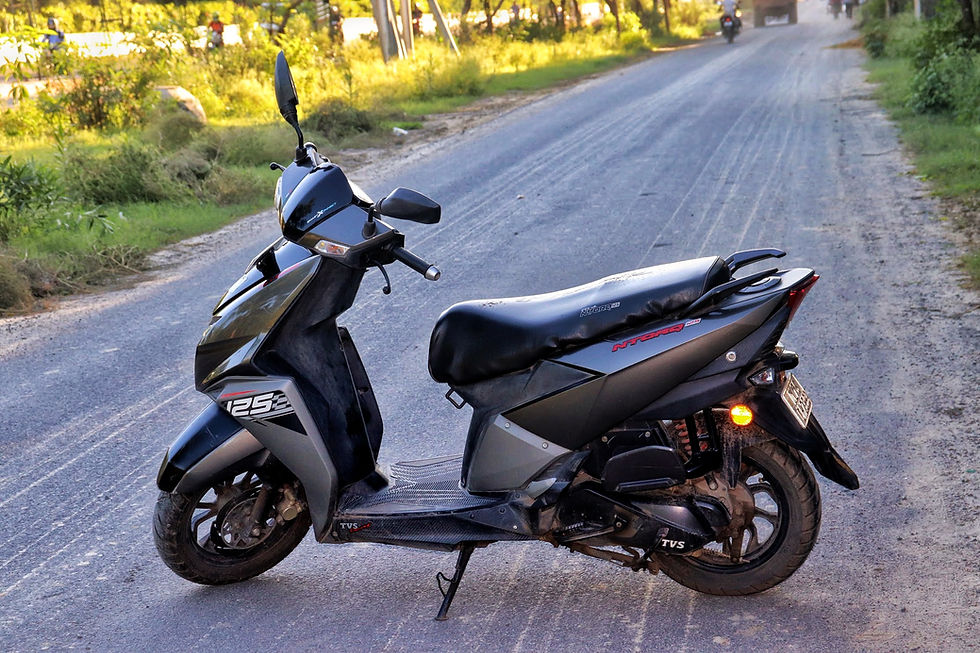Drive impressions of Kia Seltos 1.4 GDI DCT
- Torque Cartel

- May 13, 2020
- 7 min read
Almost a year back options for performance oriented SUVs in sub 20 lakhs bracket was more of a compromise as there wasn’t any such offering that could be deemed as a fun car. Despite of having SUVs of all forms, the enthusiasts still had to sacrifice quite a fair bit with the available engines and automatic transmission combos. Kia and Hyundai were known for offering engines more focused towards performance, but in the global markets except India which was a bummer for us enthusiasts. Then the day came when Kia revealed its first offering in India, the Seltos. Now Seltos would have been just another name in the comprehensive list of SUVs in our country if Kia hadn’t launched it with the 1.4 litre Turbo charged motor mated to manual or a DCT. This was when the motoring enthusiasts rejoiced for finally having to get a taste of what could potentially be the best engine and transmission combo under 20 lakhs for auto aficionados. But this powertrain is just the tip of the iceberg as the Seltos underpins a setup specifically tuned to cope up with most of our road conditions without hampering the dynamic abilities. So how actually did Kia manage to do that?

Starting off with the chassis where Kia has used the K2 platform which underpins the Verna and the Elantra, but has now gained 73% more stiffness for the Seltos. The use of high strength steel in this chassis ensures that the frame of the car is rigid enough to provide ample composure and balance in the twisties while being safe in case of any unforeseen incidents. Also talking about safety, this car comes equipped with 6 Airbages, EBD, Tyre Pressure monitoring system, ESC, Hill Descent and Ascent control in its GTX DCT trim. Features like the RSA (Road Side Assistance) and SOS are too a welcome addition in this segment. Now, apart from this composed chassis Kia has managed to do a great job with the suspension tuning as well. Front gets a McPherson Struts and Coil Spring and the rear come shod with Coupled Torsion Beam with Coil Spring. This basically translates into a ride which is pliant over most surfaces along with cornering abilities that will make you forget the actual dimensions of the car. Seltos wraps it up nicely around you to provide added confidence at the tactical bends and sharp hairpins. Taking the sportiness a notch higher is the well weighted electronic steering rack. I agree that being an electric unit it is not as responsive or communicative as a hydraulic unit but it’s still the best when it comes to the feel and feedback when compared to other steering units in this segment. The additional heft to the steering at high speeds amplifies the good bits of this setup furthermore. So, this was all about the dynamic abilities of the car, now what about the powertrain? The talking point about this car or you can say the best engine that we have experienced from a Korean manufacturer in a long time is its 1.4 litre 4-cylinder DOHC Turbo Charged GDI motor churning out 138bhp @6000rpm and a healthy 242nm @1500-3200rpm. Now the torque figures for this engine spell out performance which is really close to some of its diesel counterparts in this segment which feels just like driving over a solid wave of torque right after 1700rpm mark. On the flip side, you’ll often find yourself driving in the city in a gear or two higher than you expect with ample torque in the reserve to make those quick overtake manoeuvres. This is actually a good thing when you want to drive sedately and dish out more kilometres from that 50 litre fuel tank and going by ARAI figures this drivetrain will deliver 16.5kmpl. Now addressing the elephant in the room which happens to be the DCT gearbox, at first seems to be a debatable option over the manual for enthusiasts. Surely going by the overall feel and enthusiasm of the motor, the manual is the one to go for from an enthusiast’s perspective, but it’s rather hard to ignore the fact that most of us enthusiasts will spend most of their time in dodging city traffic where the manual gearbox and the long travel of the otherwise light clutch can be a bit of a bother. This is where an auto gearbox shines providing the ease of shifting automatically; however in this case, the DCT does all of that and even some more, actually a lot more! The DCT or a Dual Clutch Transmission is a gearbox that incorporates two clutches, one for the odd gears (reverse, 1, 3 & 5) and the other one for even gears (2, 4 & 6). This makes the gearshifts shifts considerably faster in a DCT than in any other AMT, CVT or Torque Converter unit. Now all of this boils down to how a manufacturer synchronises this tech with the engine, which is where Kia has completely nailed it. This 7-speed DCT unit, code named as D7UF1-2, is the most responsive unit among the twin clutch gearboxes offered by manufacturers in this segment. The second generation of D7UF1 gearbox made its debut in 2016. This particular iteration has a max torque limit of 340nm which is considerably higher than any other twin clutch gearbox available in this segment. There is even an “S” or a manual mode where the car holds a particular gear and shifts only at 6000rpm after which the torque curve flattens out. Also for slow speeds, there’s a crawl mode that can keep the car rolling up to 7kmph in “D” mode.
Now, many people complain that the DCT gearboxes are not reliable; they heat up pretty quickly and sometimes even stall due to overheat. For this we need to understand the functioning of the gearbox before blaming any particular manufacturer. While at a halt, shift the car to “N” or “P”. At bumper to bumper traffic situations, in case of a short halt, keep the brake pedal pressed fully or else the clutch will stay engaged resulting to overheating of the transmission. Also, to avoid such situations, Kia has done it better with a transmission temperature gauge which is present in the MID that tells the current temperature of the gearbox. With such tech on offer, Kia simply trumps other cars in its segment in terms of mechanical advancement and driving feel. But it’s not only the mechanicals that have appealed to people, the design and feature list of Seltos is every bit striking and turns heads for sure. Be it the crown jewelled LED headlamps and tail lamps, the tiger nose grill with a knurled finish on top or the bespoke 17-inch precision cut alloy wheels, all of which are out of the ordinary. The design of the car is a mix of sharp cuts and creases with thoughtfully laid out body panels. It may not have the butch proportions of the Harrier or the Hector but surely does has a character of its own which is widely applauded by the masses. This exquisite work of art even extends to its interiors with embellishments like the 8.0” Heads-Up Display, 7” MID, 10.25” high res infotainment unit with Apple Carplay and Android Auto. The feature list even comprises of a 360 degree camera, Ventilated seats, 8 speaker Bose audio, ambient lighting, electronic sunroof and an 8 way power adjustable front seat. Features and creature comforts like these with a striking design, makes the Seltos an even more compelling package than it actually is. But just like any other car the Seltos has some shortcomings as well.
For instance the space, with an average legroom, inadequate under thigh support and a limited shoulder room for 3 adults falls short when compared to its competitions. The boot space at 433 litres is way less than that of Hector’s 587 litres. In a market like India where a panoramic sunroof is more of a need, especially in this segment, Seltos gets a small overhead sunroof. Even its sibling, the 2020 Creta includes a full panoramic sunroof in its brochure. In the dynamics front, the Goodyear Assurance Triple Max 215/60 R17 tyres with a hard compound don’t do a justice in translating the potential of the car on the road. They screech and squeal under hard driving scenarios and don’t let the power down cleanly, which is more apparent in the manual variant. Though the suspensions can tackle moderate undulations pretty well, it gets bottomed out on larger portholes pretty easily. The less travel of the suspension results in a stiffer setup which increases the resonation of thuds into the cabin.
In our country, these drawbacks are plentiful to change the minds of the buyers and set their course for any other showroom. To be honest these niggles bothered me as well in the initial moments when I was just looking at the spec sheet prior the drive, but got dusted away the moment I pulled off a 0-100kmph sprint in just over 10 sec. The point that I’m trying to make here is that the performance of the car is more than enough to mask its shortcomings and divert your concentration to the drive. I concede to all the comments that delineate the ride quality to be stiff; however it’s the most prevalent trade-off that the cars have to make between a pliant ride quality and sharp dynamic abilities, which the Seltos has undergone as well. In my books though, Kia has managed to strike the best balance between ride quality and overall dynamics with the Seltos.

Now, for an enthusiast, a well-balanced chassis, well calibrated steering rack and a powerful drivetrain are the only features that matters the most. The Seltos here offers all of that alongside the long list of features accoutred in a yearning guise, all of which at a price of tag of 16.29 lakhs (ex-showroom) for the GTX DCT trim imply the immense value that this car offers in this segment. So on the whole, I can’t say about others, but the above mentioned attributes of the Kia Seltos 1.4 GDI DCT have compelled me to consider and even recommend it as the best automatic offering for enthusiasts in this segment.
Soumil Dey - Author





Nicely written. Well done. Could get lots of insights.